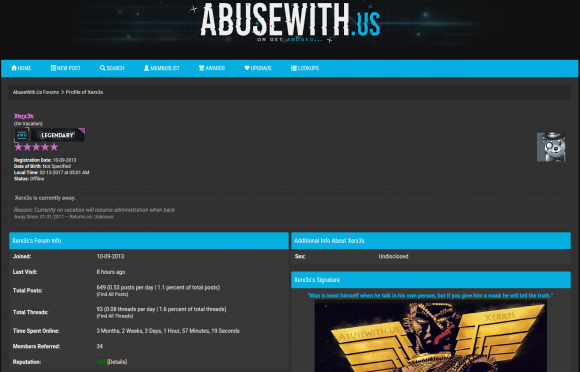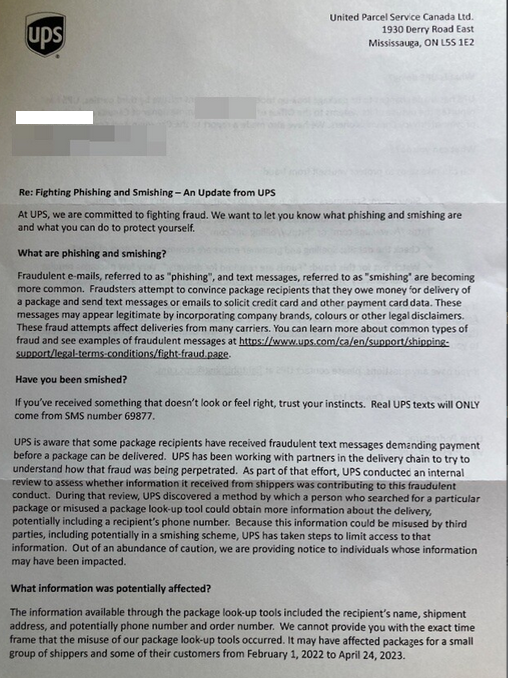[This is Part III in a series on research conducted for a recent Hulu documentary on the 2015 hack of marital infidelity website AshleyMadison.com.]
In 2019, a Canadian company called Defiant Tech Inc. pleaded guilty to running LeakedSource[.]com, a service that sold access to billions of passwords and other data exposed in countless data breaches. KrebsOnSecurity has learned that the owner of Defiant Tech, a 32-year-old Ontario man named Jordan Evan Bloom, was hired in late 2014 as a developer for the marital infidelity site AshleyMadison.com. Bloom resigned from AshleyMadison citing health reasons in June 2015 — less than one month before unidentified hackers stole data on 37 million users — and launched LeakedSource three months later.

Jordan Evan Bloom, posing in front of his Lamborghini.
On Jan. 15, 2018, the Royal Canadian Mounted Police (RCMP) charged then 27-year-old Bloom, of Thornhill, Ontario, with selling stolen personal identities online through the website LeakedSource[.]com.
LeakedSource was advertised on a number of popular cybercrime forums as a service that could help hackers break into valuable or high-profile accounts. LeakedSource also tried to pass itself off as a legal, legitimate business that was marketing to security firms and professionals.
The RCMP arrested Bloom in December 2017, and said he made approximately $250,000 selling hacked data, which included information on 37 million user accounts leaked in the 2015 Ashley Madison breach.
Subsequent press releases from the RCMP about the LeakedSource investigation omitted any mention of Bloom, and referred to the defendant only as Defiant Tech. In a legal settlement that is quintessentially Canadian, the matter was resolved in 2019 after Defiant Tech agreed to plead guilty. The RCMP declined to comment for this story.
The Impact Team, the hacker group that claimed responsibility for stealing and leaking the AshleyMadison user data, also leaked several years worth of email from then-CEO Noel Biderman. A review of those messages shows that Ashley Madison hired Jordan Evan Bloom as a PHP developer in December 2014 — even though the company understood that Bloom’s success as a programmer and businessman was tied to shady and legally murky enterprises.
Bloom’s recommendation came to Biderman via Trevor Sykes, then chief technology officer for Ashley Madison parent firm Avid Life Media (ALM). The following is an email from Sykes to Biderman dated Nov. 14, 2014:
“Greetings Noel,
“We’d like to offer Jordan Bloom the position of PHP developer reporting to Mike Morris for 75k CAD/Year. He did well on the test, but he also has a great understanding of the business side of things having run small businesses himself. This was an internal referral.”
When Biderman responded that he needed more information about the candidate, Sykes replied that Bloom was independently wealthy as a result of his forays into the shadowy world of “gold farming” — the semi-automated use of large numbers of player accounts to win some advantage that is usually related to cashing out game accounts or inventory. Gold farming is particularly prevalent in massively multiplayer online role-playing games (MMORPGs), such as RuneScape and World of Warcraft.
“In his previous experience he had been doing RMT (Real Money Trading),” Sykes wrote. “This is the practice of selling virtual goods in games for real world money. This is a grey market, which is usually against the terms and services of the game companies.” Here’s the rest of his message to Biderman:
“RMT sellers traditionally have a lot of problems with chargebacks, and payment processor compliance. During my interview with him, I spent some time focusing in on this. He had to demonstrate to the processor, Paypal, at the time he had a business and technical strategy to address his charge back rate.”
“He ran this company himself, and did all the coding, including the integration with the processors,” Sykes continued in his assessment of Bloom. “Eventually he was squeezed out by Chinese gold farmers, and their ability to market with much more investment than he could. In addition the cost of ‘farming’ the virtual goods was cheaper in China to do than in North America.”
The gold farming reference is fascinating because in 2017 KrebsOnSecurity published Who Ran LeakedSource?, which examined clues suggesting that one of the administrators of LeakedSource also was the admin of abusewith[.]us, a site unabashedly dedicated to helping people hack email and online gaming accounts.

An administrator account Xerx3s on Abusewithus.
Abusewith[.]us began in September 2013 as a forum for learning and teaching how to hack accounts at Runescape, an MMORPG set in a medieval fantasy realm where players battle for kingdoms and riches.
The currency with which Runescape players buy and sell weapons, potions and other in-game items are virtual gold coins, and many of Abusewith[dot]us’s early members traded in a handful of commodities: Phishing kits and exploits that could be used to steal Runescape usernames and passwords from fellow players; virtual gold plundered from hacked accounts; and databases from hacked forums and websites related to Runescape and other online games.
That 2017 report here interviewed a Michigan man who acknowledged being administrator of Abusewith[.]us, but denied being the operator of LeakedSource. Still, the story noted that LeakedSource likely had more than one operator, and breached records show Bloom was a prolific member of Abusewith[.]us.
In an email to all employees on Dec. 1, 2014, Ashley Madison’s director of HR said Bloom graduated from York University in Toronto with a degree in theoretical physics, and that he has been an active programmer since high school.
“He’s a proprietor of a high traffic multiplayer game and developer/publisher of utilities such as PicTrace,” the HR director enthused. “He will be a great addition to the team.”
PicTrace appears to have been a service that allowed users to glean information about anyone who viewed an image hosted on the platform, such as their Internet address, browser type and version number. A copy of pictrace[.]com from Archive.org in 2012 redirects to the domain qksnap.com, which DomainTools.com says was registered to a Jordan Bloom from Thornhill, ON that same year.
The street address listed in the registration records for qksnap.com — 204 Beverley Glen Blvd — also shows up in the registration records for leakadvisor[.]com, a domain registered in 2017 just months after Canadian authorities seized the servers running LeakedSource.

Pictrace, one of Jordan Bloom’s early IT successes.
A review of passive DNS records from DomainTools indicates that in 2013 pictrace[.]com shared a server with just a handful of other domains, including Near-Reality[.]com — a popular RuneScape Private Server (RSPS) game based on the RuneScape MMORPG.
Copies of near-reality[.]com from 2013 via Archive.org show the top of the community’s homepage was retrofitted with a message saying Near Reality was no longer available due to a copyright dispute. Although the site doesn’t specify the other party to the copyright dispute, it appears Near-Reality got sued by Jagex, the owner of RuneScape.
The message goes on to say the website will no longer “encourage, facilitate, enable or condone (i) any infringement of copyright in RuneScape or any other Jagex product; nor (ii) any breach of the terms and conditions of RuneScape or any other Jagex product.”

A scene from the MMORPG RuneScape.
Near Reality also has a Facebook page that was last updated in 2019, when its owner posted a link to a news story about Defiant Tech’s guilty plea in the LeakedSource investigation. That Facebook page indicates Bloom also went by the nickname “Agentjags.”
“Just a quick PSA,” reads a post to the Near Reality Facebook page dated Jan. 21, 2018, which linked to a story about the charges against Bloom and a photo of Bloom standing in front of his lime-green Lamborghini. “Agentjags has got involved in some shady shit that may have compromised your personal details. I advise anyone who is using an old NR [Near Reality] password for anything remotely important should change it ASAP.”
By the beginning of 2016, Bloom was nowhere to be found, and was suspected of having fled his country for the Caribbean, according to the people commenting on the Near Reality Facebook page:
“Jordan aka Agentjags has gone missing,” wrote a presumed co-owner of the Facebook page. “He is supposedly hiding in St. Lucia, doing what he loved, scuba-diving. Any information to his whereabouts will be appreciated.”
KrebsOnSecurity ran the unusual nickname “AgentJags” through a search at Constella Intelligence, a commercial service that tracks breached data sets. That search returned just a few dozen results — and virtually all were accounts at various RuneScape-themed sites, including a half-dozen accounts at Abusewith[.]us.
Constella found other “AgentJags” accounts tied to the email address ownagegaming1@gmail.com. The marketing firm Apollo.io experienced a data breach several years back, and according to Apollo the email address ownagegaming1@gmail.com belongs to Jordan Bloom in Ontario.
Constella also revealed that the password frequently used by ownagegaming1@gmail.com across many sites was some variation on “niggapls,” which my 2017 report found was also the password used by the administrator of LeakedSource.
Constella discovered that the email eric.malek@rogers.com comes up when one searches for “AgentJags.” This is curious because emails leaked from Ashley Madison’s then-CEO Biderman show that Eric Malek from Toronto was the Ashley Madison employee who initially recommended Bloom for the PHP developer job.
According to DomainTools.com, Eric.Malek@rogers.com was used to register the domain devjobs.ca, which previously advertised “the most exciting developer jobs in Canada, delivered to you weekly.” Constella says eric.malek@rogers.com also had an account at Abusewith[.]us — under the nickname “Jags.”
Biderman’s email records show Eric Malek was also a PHP developer for Ashley Madison, and that he was hired into this position just a few months before Bloom — on Sept. 2, 2014. The CEO’s leaked emails show Eric Malek resigned from his developer position at Ashley Madison on June 19, 2015.
“Please note that Eric Malek has resigned from this position with Avid and his last day will be June 19th,” read a June 5, 2015 email from ALM’s HR director. “He is resigning to deal with some personal issues which include health issues. Because he is not sure how much time it will take to resolve, he is not requesting a leave of absence (his time off will be indefinite). Overall, he likes the company and plans to reach out to Trevor or I when the issues are resolved to see what is available at that time.”
A follow-up email from Biderman demanded, “want to know where he’s truly going….,” and it’s unclear whether there was friction with Malek’s departure. But ALM General Counsel Avi Weisman replied indicating that Malek probably would not sign an “Exit Acknowledgment Form” prior to leaving, and that the company had unanswered questions for Malek.
“Aneka should dig during exit interview,” Weisman wrote. “Let’s see if he balks at signing the Acknowledgment.”
Bloom’s departure notice from Ashley Madison’s HR person, dated June 23, 2015, read:
“Please note that Jordan Bloom has resigned from his position as PHP Developer with Avid. He is leaving for personal reasons. He has a neck issue that will require surgery in the upcoming months and because of his medical appointment schedule and the pain he is experiencing he can no longer commit to a full-time schedule. He may pick up contract work until he is back to 100%.”
A follow-up note to Biderman about this announcement read:
“Note that he has disclosed that he is independently wealthy so he can get by without FT work until he is on the mend. He has signed the Exit Acknowledgement Form already without issue. He also says he would consider reapplying to Avid in the future if we have opportunities available at that time.”
Perhaps Mr. Bloom hurt his neck from craning it around blind spots in his Lamborghini. Maybe it was from a bad scuba outing. Whatever the pain in Bloom’s neck was, it didn’t stop him from launching himself fully into LeakedSource[.]com, which was registered roughly one month after the Impact Team leaked data on 37 million Ashley Madison accounts.
Mr. Malek declined a request for comment. A now-deleted LinkedIn profile for Malek from December 2018 listed him as a “technical recruiter” from Toronto who also attended Mr. Bloom’s alma mater — York University. That resume did not mention Mr. Malek’s brief stint as a PHP developer at Ashley Madison.
“Developer, entrepreneur, and now technical recruiter of the most uncommon variety!” Mr. Malek’s LinkedIn profile enthused. “Are you a developer, or other technical specialist, interested in working with a recruiter who can properly understand your concerns and aspirations, technical, environmental and financial? Don’t settle for a ‘hack’; this is your career, let’s do it right! Connect with me on LinkedIn. Note: If you are not a resident of Canada/Toronto, I cannot help you.”
Mr. Bloom told KrebsOnSecurity he had no role in harming or hacking Ashley Madison. Bloom validated his identity by responding at one of the email addresses mentioned above, and agreed to field questions so long as KrebsOnSecurity agreed to publish our email conversation in full (PDF).
Bloom said Mr. Malek did recommend him for the Ashley Madison job, but that Mr. Malek also received a $5,000 referral bonus for doing so. Given Mr. Malek’s stated role as a technical recruiter, it seems likely he also recommended several other employees to Ashley Madison.
Bloom was asked whether anyone at the RCMP, Ashley Madison or any authority anywhere ever questioned him in connection with the July 2015 hack of Ashley Madison. He replied that he was called once by someone claiming to be from the Toronto Police Service asking if he knew anything about the Ashley Madison hack.
“The AM situation was not something they pursued according to the RCMP disclosure,” Bloom wrote. “Learning about the RCMP’s most advanced cyber investigative techniques and capabilities was very interesting though. I was eventually told information by a third party which included knowledge that law enforcement effectively knew who the hacker was, but didn’t have enough evidence to proceed with a case. That is the extent of my involvement with any authorities.”
As to his company’s guilty plea for operating LeakedSource, Bloom maintains that the judge at his preliminary inquiry found that even if everything the Canadian government alleged was true it would not constitute a violation of any law in Canada with respect the charges the RCMP leveled against him, which included unauthorized use of a computer and “mischief to data.”
“In Canada at the lower court level we are allowed to possess stolen information and manipulate our copies of them as we please,” Bloom said. “The judge however decided that a trial was required to determine whether any activities of mine were reckless, as the other qualifier of intentionally criminal didn’t apply. I will note here that nothing I was accused of doing would have been illegal if done in the United States of America according to their District Attorney. +1 for free speech in America vs freedom of expression in Canada.”
“Shortly after their having most of their case thrown out, the Government proposed an offer during a closed door meeting where they would drop all charges against me, provide full and complete personal immunity, and in exchange the Corporation which has since been dissolved would plead guilty,” Bloom continued. “The Corporation would also pay a modest fine.”
Bloom said he left Ashley Madison because he was bored, but he acknowledged starting LeakedSource partly in response to the Ashley Madison hack.
“I intended to leverage my gaming connections to get into security work including for other private servers such as Minecraft communities and others,” Bloom said. “After months of asking management for more interesting tasks, I became bored. Some days I had virtually nothing to do except spin in my chair so I would browse the source code for security holes to fix because I found it enjoyable.”
“I believe the decision to start LS [LeakedSource] was partly inspired by the AM hack itself, and the large number of people from a former friend group messaging me asking if XYZ person was in the leak after I revealed to them that I downloaded a copy and had the ability to browse it,” Bloom continued. “LS was never my idea – I was just a builder, and the only Canadian. In other countries it was never thought to be illegal on closer examination of their laws.”
Bloom said he still considers himself independently wealthy, and that still has the lime green Lambo. But he said he’s currently unemployed and can’t seem to land a job in what he views as his most promising career path: Information security.
“As I’m sure you’re aware, having negative media attention associated with alleged (key word) criminal activity can have a detrimental effect on employment, banking and relationships,” Bloom wrote. “I have no current interest in being a business owner, nor do I have any useful business ideas to be honest. I was and am interested in interesting Information Security/programming work but it’s too large of a risk for any business to hire someone who was formerly accused of a crime.”
If you liked this story, please consider reading the first two pieces in this series:
SEO Expert Hired and Fired by Ashley Madison Turned on Company, Promising Revenge
Top Suspect in 2015 Ashley Madison Hack Committed Suicide in 2014
Microsoft Corp. today released software updates to quash 130 security bugs in its Windows operating systems and related software, including at least five flaws that are already seeing active exploitation. Meanwhile, Apple customers have their own zero-day woes again this month: On Monday, Apple issued (and then quickly pulled) an emergency update to fix a zero-day vulnerability that is being exploited on MacOS and iOS devices.

On July 10, Apple pushed a “Rapid Security Response” update to fix a code execution flaw in the Webkit browser component built into iOS, iPadOS, and macOS Ventura. Almost as soon as the patch went out, Apple pulled the software because it was reportedly causing problems loading certain websites. MacRumors says Apple will likely re-release the patches when the glitches have been addressed.
Launched in May, Apple’s Rapid Security Response updates are designed to address time-sensitive vulnerabilities, and this is the second month Apple has used it. July marks the sixth month this year that Apple has released updates for zero-day vulnerabilities — those that get exploited by malware or malcontents before there is an official patch available.
If you rely on Apple devices and don’t have automatic updates enabled, please take a moment to check the patch status of your various iDevices. The latest security update that includes the fix for the zero-day bug should be available in iOS/iPadOS 16.5.1, macOS 13.4.1, and Safari 16.5.2.
On the Windows side, there are at least four vulnerabilities patched this month that earned high CVSS (badness) scores and that are already being exploited in active attacks, according to Microsoft. They include CVE-2023-32049, which is a hole in Windows SmartScreen that lets malware bypass security warning prompts; and CVE-2023-35311 allows attackers to bypass security features in Microsoft Outlook.
The two other zero-day threats this month for Windows are both privilege escalation flaws. CVE-2023-32046 affects a core Windows component called MSHTML, which is used by Windows and other applications, like Office, Outlook and Skype. CVE-2023-36874 is an elevation of privilege bug in the Windows Error Reporting Service.
Many security experts expected Microsoft to address a fifth zero-day flaw — CVE-2023-36884 — a remote code execution weakness in Office and Windows.
“Surprisingly, there is no patch yet for one of the five zero-day vulnerabilities,” said Adam Barnett, lead software engineer at Rapid7. “Microsoft is actively investigating publicly disclosed vulnerability, and promises to update the advisory as soon as further guidance is available.”
Barnett notes that Microsoft links exploitation of this vulnerability with Storm-0978, the software giant’s name for a cybercriminal group based out of Russia that is identified by the broader security community as RomCom.
“Exploitation of CVE-2023-36884 may lead to installation of the eponymous RomCom trojan or other malware,” Barnett said. “[Microsoft] suggests that RomCom / Storm-0978 is operating in support of Russian intelligence operations. The same threat actor has also been associated with ransomware attacks targeting a wide array of victims.”
Microsoft’s advisory on CVE-2023-36884 is pretty sparse, but it does include a Windows registry hack that should help mitigate attacks on this vulnerability. Microsoft has also published a blog post about phishing campaigns tied to Storm-0978 and to the exploitation of this flaw.
Barnett said it’s while it’s possible that a patch will be issued as part of next month’s Patch Tuesday, Microsoft Office is deployed just about everywhere, and this threat actor is making waves.
“Admins should be ready for an out-of-cycle security update for CVE-2023-36884,” he said.

Microsoft also today released new details about how it plans to address the existential threat of malware that is cryptographically signed by…wait for it….Microsoft.
In late 2022, security experts at Sophos, Trend Micro and Cisco warned that ransomware criminals were using signed, malicious drivers in an attempt to evade antivirus and endpoint detection and response (EDR) tools.
In a blog post today, Sophos’s Andrew Brandt wrote that Sophos identified 133 malicious Windows driver files that were digitally signed since April 2021, and found 100 of those were actually signed by Microsoft. Microsoft said today it is taking steps to ensure those malicious driver files can no longer run on Windows computers.
As KrebsOnSecurity noted in last month’s story on malware signing-as-a-service, code-signing certificates are supposed to help authenticate the identity of software publishers, and provide cryptographic assurance that a signed piece of software has not been altered or tampered with. Both of these qualities make stolen or ill-gotten code-signing certificates attractive to cybercriminal groups, who prize their ability to add stealth and longevity to malicious software.
Dan Goodin at Ars Technica contends that whatever Microsoft may be doing to keep maliciously signed drivers from running on Windows is being bypassed by hackers using open source software that is popular with video game cheaters.
“The software comes in the form of two software tools that are available on GitHub,” Goodin explained. “Cheaters use them to digitally sign malicious system drivers so they can modify video games in ways that give the player an unfair advantage. The drivers clear the considerable hurdle required for the cheat code to run inside the Windows kernel, the fortified layer of the operating system reserved for the most critical and sensitive functions.”
Meanwhile, researchers at Cisco’s Talos security team found multiple Chinese-speaking threat groups have repurposed the tools—one apparently called “HookSignTool” and the other “FuckCertVerifyTimeValidity.”
“Instead of using the kernel access for cheating, the threat actors use it to give their malware capabilities it wouldn’t otherwise have,” Goodin said.
For a closer look at the patches released by Microsoft today, check out the always-thorough Patch Tuesday roundup from the SANS Internet Storm Center. And it’s not a bad idea to hold off updating for a few days until Microsoft works out any kinks in the updates: AskWoody.com usually has the lowdown on any patches that may be causing problems for Windows users.
And as ever, please consider backing up your system or at least your important documents and data before applying system updates. If you encounter any problems with these updates, please drop a note about it here in the comments.



When the marital infidelity website AshleyMadison.com learned in July 2015 that hackers were threatening to publish data stolen from 37 million users, the company’s then-CEO Noel Biderman was quick to point the finger at an unnamed former contractor. But as a new documentary series on Hulu reveals [SPOILER ALERT!], there was just one problem with that theory: Their top suspect had killed himself more than a year before the hackers began publishing stolen user data.
The new documentary, The Ashley Madison Affair, begins airing today on Hulu in the United States and on Disney+ in the United Kingdom. The series features interviews with security experts and journalists, Ashley Madison executives, victims of the breach and jilted spouses.

The series also touches on shocking new details unearthed by KrebsOnSecurity and Jeremy Bullock, a data scientist who worked with the show’s producers at the Warner Bros. production company Wall to Wall Media. Bullock had spent many hours poring over the hundreds of thousands of emails that the Ashley Madison hackers stole from Biderman and published online in 2015.
Wall to Wall reached out in July 2022 about collaborating with Bullock after KrebsOnSecurity published A Retrospective on the 2015 Ashley Madison Breach. That piece explored how Biderman — who is Jewish — had become the target of concerted harassment campaigns by anti-Semitic and far-right groups online in the months leading up to the hack.
Whoever hacked Ashley Madison had access to all employee emails, but they only released Biderman’s messages — three years worth. Apropos of my retrospective report, Bullock found that a great many messages in Biderman’s inbox were belligerent and anti-Semitic screeds from a former Ashley Madison employee named William Brewster Harrison.

William Harrison’s employment contract with Ashley Madison parent Avid Life Media.
The messages show that Harrison was hired in March 2010 to help promote Ashley Madison online, but the messages also reveal Harrison was heavily involved in helping to create and cultivate phony female accounts on the service.
There is evidence to suggest that in 2010 Harrison was directed to harass the owner of Ashleymadisonsucks.com into closing the site or selling the domain to Ashley Madison.
Ashley Madison’s parent company — Toronto-based Avid Life Media — filed a trademark infringement complaint in 2010 that succeeded in revealing a man named Dennis Bradshaw as the owner. But after being informed that Bradshaw was not subject to Canadian trademark laws, Avid Life offered to buy AshleyMadisonSucks.com for $10,000.
When Bradshaw refused to sell the domain, he and his then-girlfriend were subject to an unrelenting campaign of online harassment and blackmail. It now appears those attacks were perpetrated by Harrison, who sent emails from different accounts at the free email service Vistomail pretending to be Bradshaw, his then-girlfriend and their friends.
[As the documentary points out, the domain AshleyMadisonSucks.com was eventually transferred to Ashley Madison, which then shrewdly used it for advertising and to help debunk theories about why its service was supposedly untrustworthy].
Harrison even went after Bradshaw’s lawyer and wife, listing them both on a website he created called Contact-a-CEO[.]com, which Harrison used to besmirch the name of major companies — including several past employers — all entities he believed had slighted him or his family in some way. The site also claimed to include the names, addresses and phone numbers of top CEOs.

A cached copy of Harrison’s website, contact-the-ceo.com.
An exhaustive analysis of domains registered to the various Vistomail pseudonyms used by Harrison shows he also ran Bash-a-Business[.]com, which Harrison dedicated to “all those sorry ass corporate executives out there profiting from your hard work, organs, lives, ideas, intelligence, and wallets.” Copies of the site at archive.org show it was the work of someone calling themselves “The Chaos Creator.”
Will Harrison was terminated as an Ashley Madison employee in November 2011, and by early 2012 he’d turned his considerable harassment skills squarely against the company. Ashley Madison’s long-suspected army of fake female accounts came to the fore in August 2012 after the former sex worker turned activist and blogger Maggie McNeill published screenshots apparently taken from Ashley Madison’s internal systems suggesting that a large percentage of the female accounts on the service were computer-operated bots.
Ashley Madison’s executives understood that only a handful of employees at the time would have had access to the systems needed to produce the screenshots McNeill published online. In one exchange on Aug. 16, 2012, Ashley Madison’s director of IT was asked to produce a list of all company employees with all-powerful administrator access.
“Who or what is asdfdfsda@asdf.com?,” Biderman asked, after being sent a list of nine email addresses.
“It appears to be the email address Will used for his profiles,” the IT director replied.
“And his access was never shut off until today?,” asked the company’s general counsel Mike Dacks.

A Biderman email from 2012.
What prompted the data scientist Bullock to reach out were gobs of anti-Semitic diatribes from Harrison, who had taken to labeling Biderman and others “greedy Jew bastards.”
“So good luck, I’m sure we’ll talk again soon, but for now, Ive got better things in the oven,” Harrison wrote to Biderman after his employment contract with Ashley Madison was terminated. “Just remember I outsmarted you last time and I will outsmart and out maneuver you this time too, by keeping myself far far away from the action and just enjoying the sideline view, cheering for the opposition.”

A 2012 email from William Harrison to former Ashley Madison CEO Noel Biderman.
Harrison signed his threatening missive with the salutation, “We are legion,” suggesting that whatever comeuppance he had in store for Ashley Madison would come from a variety of directions and anonymous hackers.
The leaked Biderman emails show that Harrison made good on his threats, and that in the months that followed Harrison began targeting Biderman and other Ashley Madison executives with menacing anonymous emails and spoofed phone calls laced with profanity and anti-Semitic language.
But on Mar. 5, 2014, Harrison committed suicide by shooting himself in the head with a handgun. This fact was apparently unknown to Biderman and other Ashley Madison executives more than a year later when their July 2015 hack was first revealed.
Does Harrison’s untimely suicide rule him out as a suspect in the 2015 hack? Who is The Chaos Creator, and what else transpired between Harrison and Ashley Madison prior to his death? We’ll explore these questions in Part II of this story, to be published early next week.
The beginning of the summer break is the perfect time for parents to remind their children about the importance of safe online habits
The post School’s out for summer, but it’s not time to let your cyber guard down appeared first on WeLiveSecurity
The United Parcel Service (UPS) says fraudsters have been harvesting phone numbers and other information from its online shipment tracking tool in Canada to send highly targeted SMS phishing (a.k.a. “smishing”) messages that spoofed UPS and other top brands. The missives addressed recipients by name, included details about recent orders, and warned that those orders wouldn’t be shipped unless the customer paid an added delivery fee.
In a snail mail letter sent this month to Canadian customers, UPS Canada Ltd. said it is aware that some package recipients have received fraudulent text messages demanding payment before a package can be delivered, and that it has been working with partners in its delivery chain to try to understand how the fraud was occurring.

The recent letter from UPS about SMS phishers harvesting shipment details and phone numbers from its website.
“During that review, UPS discovered a method by which a person who searched for a particular package or misused a package look-up tool could obtain more information about the delivery, potentially including a recipient’s phone number,” the letter reads. “Because this information could be misused by third parties, including potentially in a smishing scheme, UPS has taken steps to limit access to that information.”
The written notice goes on to say UPS believes the data exposure “affected packages for a small group of shippers and some of their customers from February 1, 2022 to April 24, 2023.”
As early as April 2022, KrebsOnSecurity began receiving tips from Canadian readers who were puzzling over why they’d just received one of these SMS phishing messages that referenced information from a recent order they’d legitimately placed at an online retailer.
In March, 2023, a reader named Dylan from British Columbia wrote in to say he’d received one of these shipping fee scam messages not long after placing an order to buy gobs of building blocks directly from Lego.com. The message included his full name, phone number, and postal code, and urged him to click a link to mydeliveryfee-ups[.]info and pay a $1.55 delivery fee that was supposedly required to deliver his Legos.
“From searching the text of this phishing message, I can see that a lot of people have experienced this scam, which is more convincing because of the information the phishing text contains,” Dylan wrote. “It seems likely to me that UPS is leaking information somehow about upcoming deliveries.”
Josh is a reader who works for a company that ships products to Canada, and in early January 2023 he inquired whether there was any information about a breach at UPS Canada.
“We’ve seen many of our customers targeted with a fraudulent UPS text message scheme after placing an order,” Josh said. “A link is provided (often only after the customer responds to the text) which takes you to a captcha page, followed by a fraudulent payment collection page.”
Pivoting on the domain in the smishing message sent to Dylan shows the phishing domain shared an Internet host in Russia [91.215.85-166] with nearly two dozen other smishing related domains, including upsdelivery[.]info, legodelivery[.]info, adidascanadaltd[.]com, crocscanadafee[.]info, refw0234apple[.]info, vista-printcanada[.]info and telus-ca[.]info.
The inclusion of big-name brands in the domains of these UPS smishing campaigns suggests the perpetrators had the ability to focus their lookups on UPS customers who had recently ordered items from specific companies.
Attempts to visit these domains with a web browser failed, but loading them in a mobile device (or in my case, emulating a mobile device using a virtual machine and Developer Tools in Firefox) revealed the first stage of this smishing attack. As Josh mentioned, what first popped up was a CAPTCHA; after the visitor solved the CAPTCHA, they were taken through several more pages that requested the user’s full name, date of birth, credit card number, address, email and phone number.

A smishing website targeting Canadians who recently purchased from Adidas online. The site would only load in a mobile browser.
In April 2022, KrebsOnSecurity heard from Alex, the CEO of a technology company in Canada who asked to leave his last name out of this story. Alex reached out when he began receiving the smishing messages almost immediately after ordering two sets of Airpods directly from Apple’s website.
What puzzled Alex most was that he’d instructed Apple to send the Airpods as a gift to two different people, and less than 24 hours later the phone number he uses for his Apple account received two of the phishing messages, both of which contained salutations that included the names of the people for whom he’d bought Airpods.
“I’d put the recipient as different people on my team, but because it was my phone number on both orders I was the one getting the texts,” Alex explained. “That same day, I got text messages referring to me as two different people, neither of whom were me.”
Alex said he believes UPS Canada either doesn’t fully understand what happened yet, or it is being coy about what it knows. He said the wording of UPS’s response misleadingly suggests the smishing attacks were somehow the result of hackers randomly looking up package information via the company’s tracking website.
Alex said it’s likely that whoever is responsible figured out how to query the UPS Canada website for only pending orders from specific brands, perhaps by exploiting some type of application programming interface (API) that UPS Canada makes or made available to its biggest retail partners.
“It wasn’t like I put the order through [on Apple.ca] and some days or weeks later I got a targeted smishing attack,” he said. “It was more or less the same day. And it was as if [the phishers] were being notified the order existed.”
The letter to UPS Canada customers does not mention whether any other customers in North America were affected, and it remains unclear whether any UPS customers outside of Canada may have been targeted.
In a statement provided to KrebsOnSecurity, Sandy Springs, Ga. based UPS [NYSE:UPS] said the company has been working with partners in the delivery chain to understand how that fraud was being perpetrated, as well as with law enforcement and third-party experts to identify the cause of this scheme and to put a stop to it.
“Law enforcement has indicated that there has been an increase in smishing impacting a number of shippers and many different industries,” reads an email from Brian Hughes, director of financial and strategy communications at UPS.
“Out of an abundance of caution, UPS is sending privacy incident notification letters to individuals in Canada whose information may have been impacted,” Hughes said. “We encourage our customers and general consumers to learn about the ways they can stay protected against attempts like this by visiting the UPS Fight Fraud website.”
Strategies for stopping and responding to cyberbullying require a concerted, community-wide effort involving parents, educators and children themselves
The post Stop Cyberbullying Day: Prevention is everyone’s responsibility appeared first on WeLiveSecurity
It’s not often that a zero-day vulnerability causes a network security vendor to urge customers to physically remove and decommission an entire line of affected hardware — as opposed to just applying software updates. But experts say that is exactly what transpired this week with Barracuda Networks, as the company struggled to combat a sprawling malware threat which appears to have undermined its email security appliances in such a fundamental way that they can no longer be safely updated with software fixes.

The Barracuda Email Security Gateway (ESG) 900 appliance.
Campbell, Calif. based Barracuda said it hired incident response firm Mandiant on May 18 after receiving reports about unusual traffic originating from its Email Security Gateway (ESG) devices, which are designed to sit at the edge of an organization’s network and scan all incoming and outgoing email for malware.
On May 19, Barracuda identified that the malicious traffic was taking advantage of a previously unknown vulnerability in its ESG appliances, and on May 20 the company pushed a patch for the flaw to all affected appliances (CVE-2023-2868).
In its security advisory, Barracuda said the vulnerability existed in the Barracuda software component responsible for screening attachments for malware. More alarmingly, the company said it appears attackers first started exploiting the flaw in October 2022.
But on June 6, Barracuda suddenly began urging its ESG customers to wholesale rip out and replace — not patch — affected appliances.
“Impacted ESG appliances must be immediately replaced regardless of patch version level,” the company’s advisory warned. “Barracuda’s recommendation at this time is full replacement of the impacted ESG.”
In a statement, Barracuda said it will be providing the replacement product to impacted customers at no cost, and that not all ESG appliances were compromised.
“No other Barracuda product, including our SaaS email solutions, were impacted by this vulnerability,” the company said. “If an ESG appliance is displaying a notification in the User Interface, the ESG appliance had indicators of compromise. If no notification is displayed, we have no reason to believe that the appliance has been compromised at this time.”
Nevertheless, the statement says that “out of an abundance of caution and in furtherance of our containment strategy, we recommend impacted customers replace their compromised appliance.”
“As of June 8, 2023, approximately 5% of active ESG appliances worldwide have shown any evidence of known indicators of compromise due to the vulnerability,” the statement continues. “Despite deployment of additional patches based on known IOCs, we continue to see evidence of ongoing malware activity on a subset of the compromised appliances. Therefore, we would like customers to replace any compromised appliance with a new unaffected device.”
Rapid7‘s Caitlin Condon called this remarkable turn of events “fairly stunning,” and said there appear to be roughly 11,000 vulnerable ESG devices still connected to the Internet worldwide.
“The pivot from patch to total replacement of affected devices is fairly stunning and implies the malware the threat actors deployed somehow achieves persistence at a low enough level that even wiping the device wouldn’t eradicate attacker access,” Condon wrote.
Barracuda said the malware was identified on a subset of appliances that allowed the attackers persistent backdoor access to the devices, and that evidence of data exfiltration was identified on some systems.
Rapid7 said it has seen no evidence that attackers are using the flaw to move laterally within victim networks. But that may be small consolation for Barracuda customers now coming to terms with the notion that foreign cyberspies probably have been hoovering up all their email for months.
Nicholas Weaver, a researcher at University of California, Berkeley’s International Computer Science Institute (ICSI), said it is likely that the malware was able to corrupt the underlying firmware that powers the ESG devices in some irreparable way.
“One of the goals of malware is to be hard to remove, and this suggests the malware compromised the firmware itself to make it really hard to remove and really stealthy,” Weaver said. “That’s not a ransomware actor, that’s a state actor. Why? Because a ransomware actor doesn’t care about that level of access. They don’t need it. If they’re going for data extortion, it’s more like a smash-and-grab. If they’re going for data ransoming, they’re encrypting the data itself — not the machines.”
In addition to replacing devices, Barracuda says ESG customers should also rotate any credentials connected to the appliance(s), and check for signs of compromise dating back to at least October 2022 using the network and endpoint indicators the company has released publicly.
Update, June 9, 11:55 a.m. ET: Barracuda has issued an updated statement about the incident, portions of which are now excerpted above.
Strike a balance between making the internet a safer place for your children and giving them the freedom to explore, learn and socialize
The post Why you need parental control software – and 5 features to look for appeared first on WeLiveSecurity
Microsoft today released software updates to fix at least four dozen security holes in its Windows operating systems and other software, including patches for two zero-day vulnerabilities that are already being exploited in active attacks.

First up in May’s zero-day flaws is CVE-2023-29336, which is an “elevation of privilege” weakness in Windows which has a low attack complexity, requires low privileges, and no user interaction. However, as the SANS Internet Storm Center points out, the attack vector for this bug is local.
“Local Privilege escalation vulnerabilities are a key part of attackers’ objectives,” said Kevin Breen, director of cyber threat research at Immersive Labs. “Once they gain initial access they will seek administrative or SYSTEM-level permissions. This can allow the attacker to disable security tooling and deploy more attacker tools like Mimikatz that lets them move across the network and gain persistence.”
The zero-day patch that has received the most attention so far is CVE-2023-24932, which is a Secure Boot Security Feature Bypass flaw that is being actively exploited by “bootkit” malware known as “BlackLotus.” A bootkit is dangerous because it allows the attacker to load malicious software before the operating system even starts up.
According to Microsoft’s advisory, an attacker would need physical access or administrative rights to a target device, and could then install an affected boot policy. Microsoft gives this flaw a CVSS score of just 6.7, rating it as “Important.”
Adam Barnett, lead software engineer at Rapid7, said CVE-2023-24932 deserves a considerably higher threat score.
“Microsoft warns that an attacker who already has Administrator access to an unpatched asset could exploit CVE-2023-24932 without necessarily having physical access,” Barnett said. “Therefore, the relatively low CVSSv3 base score of 6.7 isn’t necessarily a reliable metric in this case.”
Barnett said Microsoft has provided a supplementary guidance article specifically calling out the threat posed by BlackLotus malware, which loads ahead of the operating system on compromised assets, and provides attackers with an array of powerful evasion, persistence, and Command & Control (C2) techniques, including deploying malicious kernel drivers, and disabling Microsoft Defender or Bitlocker.
“Administrators should be aware that additional actions are required beyond simply applying the patches,” Barnett advised. “The patch enables the configuration options necessary for protection, but administrators must apply changes to UEFI config after patching. The attack surface is not limited to physical assets, either; Windows assets running on some VMs, including Azure assets with Secure Boot enabled, also require these extra remediation steps for protection. Rapid7 has noted in the past that enabling Secure Boot is a foundational protection against driver-based attacks. Defenders ignore this vulnerability at their peril.”
In addition to the two zero-days fixed this month, Microsoft also patched five remote code execution (RCE) flaws in Windows, two of which have notably high CVSS scores.
CVE-2023-24941 affects the Windows Network File System, and can be exploited over the network by making an unauthenticated, specially crafted request. Microsoft’s advisory also includes mitigation advice. The CVSS for this vulnerability is 9.8 – the highest of all the flaws addressed this month.
Meanwhile, CVE-2023-28283 is a critical bug in the Windows Lightweight Directory Access Protocol (LDAP) that allows an unauthenticated attacker to execute malicious code on the vulnerable device. The CVSS for this vulnerability is 8.1, but Microsoft says exploiting the flaw may be tricky and unreliable for attackers.
Another vulnerability patched this month that was disclosed publicly before today (but not yet seen exploited in the wild) is CVE-2023-29325, a weakness in Microsoft Outlook and Explorer that can be exploited by attackers to remotely install malware. Microsoft says this vulnerability can be exploited merely by viewing a specially-crafted email in the Outlook Preview Pane.
“To help protect against this vulnerability, we recommend users read email messages in plain text format,” Microsoft’s writeup on CVE-2023-29325 advises.
“If an attacker were able to exploit this vulnerability, they would gain remote access to the victim’s account, where they could deploy additional malware,” Immersive’s Breen said. “This kind of exploit will be highly sought after by e-crime and ransomware groups where, if successfully weaponized, could be used to target hundreds of organizations with very little effort.”
For more details on the updates released today, check out roundups by Action1, Automox and Qualys, If today’s updates cause any stability or usability issues in Windows, AskWoody.com will likely have the lowdown on that.
Please consider backing up your data and/or imaging your system before applying any updates. And feel free to sound off in the comments if you experience any problems as a result of these patches.

The U.S. Federal Bureau of Investigation (FBI) this week seized 13 domain names connected to “booter” services that let paying customers launch crippling distributed denial-of-service (DDoS) attacks. Ten of the domains are reincarnations of DDoS-for-hire services the FBI seized in December 2022, when it charged six U.S. men with computer crimes for allegedly operating booters.
Booter services are advertised through a variety of methods, including Dark Web forums, chat platforms and even youtube.com. They accept payment via PayPal, Google Wallet, and/or cryptocurrencies, and subscriptions can range in price from just a few dollars to several hundred per month. The services are generally priced according to the volume of traffic to be hurled at the target, the duration of each attack, and the number of concurrent attacks allowed.
The websites that saw their homepages replaced with seizure notices from the FBI this week include booter services like cyberstress[.]org and exoticbooter[.]com, which the feds say were used to launch millions of attacks against millions of victims.
“School districts, universities, financial institutions and government websites are among the victims who have been targeted in attacks launched by booter services,” federal prosecutors in Los Angeles said in a statement.
Purveyors of booters or “stressers” claim they are not responsible for how customers use their services, and that they aren’t breaking the law because — like most security tools — these services can be used for good or bad purposes. Most booter sites employ wordy “terms of use” agreements that require customers to agree they will only stress-test their own networks — and that they won’t use the service to attack others.
But the DOJ says these disclaimers usually ignore the fact that most booter services are heavily reliant on constantly scanning the Internet to commandeer misconfigured devices that are critical for maximizing the size and impact of DDoS attacks. What’s more, none of the services seized by the government required users to demonstrate that they own the Internet addresses being stress-tested, something a legitimate testing service would insist upon.
This is the third in a series of U.S. and international law enforcement actions targeting booter services. In December 2022, the feds seized four-dozen booter domains and charged six U.S. men with computer crimes related to their alleged ownership of the popular DDoS-for-hire services. In December 2018, the feds targeted 15 booter sites, and three booter store defendants who later pleaded guilty.
While the FBI’s repeated seizing of booter domains may seem like an endless game of virtual Whac-a-Mole, continuously taking these services offline imposes high enough costs for the operators that some of them will quit the business altogether, says Richard Clayton, director of Cambridge University’s Cybercrime Centre.
In 2020, Clayton and others published “Cybercrime is Mostly Boring,” an academic study on the quality and types of work needed to build, maintain and defend illicit enterprises that make up a large portion of the cybercrime-as-a-service market. The study found that operating a booter service effectively requires a mind-numbing amount of constant, tedious work that tends to produce high burnout rates for booter service operators — even when the service is operating efficiently and profitably.
For example, running an effective booter service requires a substantial amount of administrative work and maintenance, much of which involves constantly scanning for, commandeering and managing large collections of remote systems that can be used to amplify online attacks, Clayton said. On top of that, building brand recognition and customer loyalty takes time.
“If you’re running a booter and someone keeps taking your domain or hosting away, you have to then go through doing the same boring work all over again,” Clayton told KrebsOnSecurity. “One of the guys the FBI arrested in December [2022] spent six months moaning that he lost his servers, and could people please lend him some money to get it started again.”
In a statement released Wednesday, prosecutors in Los Angeles said four of the six men charged last year for running booter services have since pleaded guilty. However, at least one of the defendants from the 2022 booter bust-up — John M. Dobbs, 32, of Honolulu, HI — has pleaded not guilty and is signaling he intends to take his case to trial.

The FBI seizure notice that replaced the homepages of several booter services this week.
Dobbs is a computer science graduate student who for the past decade openly ran IPStresser[.]com, a popular and powerful attack-for-hire service that he registered with the state of Hawaii using his real name and address. Likewise, the domain was registered in Dobbs’s name and hometown in Pennsylvania. Prosecutors say Dobbs’ service attracted more than two million registered users, and was responsible for launching a staggering 30 million distinct DDoS attacks.
Many accused stresser site operators have pleaded guilty over the years after being hit with federal criminal charges. But the government’s core claim — that operating a booter site is a violation of U.S. computer crime laws — wasn’t properly tested in the courts until September 2021.
That was when a jury handed down a guilty verdict against Matthew Gatrel, a then 32-year-old St. Charles, Ill. man charged in the government’s first 2018 mass booter bust-up. Despite admitting to FBI agents that he ran two booter services (and turning over plenty of incriminating evidence in the process), Gatrel opted to take his case to trial, defended the entire time by court-appointed attorneys.
Gatrel was convicted on all three charges of violating the Computer Fraud and Abuse Act, including conspiracy to commit unauthorized impairment of a protected computer, conspiracy to commit wire fraud, and unauthorized impairment of a protected computer. He was sentenced to two years in prison.
A copy of the FBI’s booter seizure warrant is here (PDF). According to the DOJ, the defendants who pleaded guilty to operating booter sites include:
–Jeremiah Sam Evans Miller, aka “John The Dev,” 23, of San Antonio, Texas, who pleaded guilty on April 6 to conspiracy and violating the computer fraud and abuse act related to the operation of a booter service named RoyalStresser[.]com (formerly known as Supremesecurityteam[.]com);
–Angel Manuel Colon Jr., aka “Anonghost720” and “Anonghost1337,” 37, of Belleview, Florida, who pleaded guilty on February 13 to conspiracy and violating the computer fraud and abuse act related to the operation of a booter service named SecurityTeam[.]io;
–Shamar Shattock, 19, of Margate, Florida, who pleaded guilty on March 22 to conspiracy to violate the computer fraud and abuse act related to the operation of a booter service known as Astrostress[.]com;
–Cory Anthony Palmer, 23, of Lauderhill, Florida, who pleaded guilty on February 16 to conspiracy to violate the computer fraud and abuse act related to the operation of a booter service known as Booter[.]sx.
All four defendants are scheduled to be sentenced this summer.
The booter domains seized by the FBI this week include:
cyberstress[.]org
exoticbooter[.]com
layerstress[.]net
orbitalstress[.]xyz
redstresser[.]io
silentstress[.]wtf
sunstresser[.]net
silent[.]to
mythicalstress[.]net
dreams-stresser[.]org
stresserbest[.]io
stresserus[.]io
quantum-stress[.]org












John Clifton Davies, a 60-year-old con man from the United Kingdom who fled the country in 2015 before being sentenced to 12 years in prison for fraud, has enjoyed a successful life abroad swindling technology startups by pretending to be a billionaire investor. Davies’ newest invention appears to be “CodesToYou,” which purports to be a “full cycle software development company” based in the U.K.

The scam artist John Bernard a.k.a. Alan John Mykailov (left) in a recent Zoom call, and a mugshot of John Clifton Davies from nearly a decade earlier.
Several articles here have delved into the history of John Bernard, the pseudonym used by a fake billionaire technology investor who tricked dozens of startups into giving him tens of millions of dollars.
John Bernard’s real name is John Clifton Davies, a convicted fraudster from the United Kingdom who is currently a fugitive from justice. For several years until reinventing himself again quite recently, Bernard pretended to be a billionaire Swiss investor who made his fortunes in the dot-com boom 20 years ago.
“The Private Office of John Bernard” let it be known to investment brokers that he had tens of millions of dollars to invest in tech startups, and he attracted a stream of new victims by offering extraordinarily generous finder’s fees to brokers who helped him secure new clients. But those brokers would eventually get stiffed because Bernard’s company would never consummate a deal.

John Bernard’s former website, where he pretended to be a billionaire tech investor.
Bernard would promise to invest millions in tech startups, and then insist that companies pay tens of thousands of dollars worth of due diligence fees up front. However, the due diligence company he insisted on using — another Swiss firm called The Inside Knowledge GmbH — also was secretly owned by Bernard, who would invariably pull out of the deal after receiving the due diligence money.
A variety of clues suggest Davies has recently adopted at least one other identity — Alan John Mykhailov — who is listed as chairman of a British concern called CodesToYou LTD, incorporated in May 2022. The CodesToYou website says the company employs talented coders in several countries, and that its programmers offer “your ultimate balance between speed, cost and quality.”

The team from CodesToYou.
In response to questions from KrebsOnSecurity, CodesToYou’s marketing manager — who gave their name only as “Zhena” — said the company was not affiliated with any John Bernard or John Clifton Davies, and maintained that CodesToYou is a legitimate enterprise.
But publicly available information about this company and its leadership suggests otherwise. Official incorporation documents from the U.K.’s Companies House represent that CodesToYou is headed by an Alan John Mykhailov, a British citizen born in March 1958.
Companies House says Mykhailov is an officer in three other companies, including one called Blackstone Corporate Alliance Ltd. According to the Swiss business tracking service business-monitor.ch, Blackstone Corporate Alliance Ltd. is currently the entity holding a decision-making role in John Bernard’s fake due diligence company — The Inside Knowledge GmbH — which is now in liquidation.

A screen shot of the stock photos and corporate-speak on John Bernard’s old website. Image: Archive.org
Also listed as a partner in Blackstone Corporate Alliance Limited is Igor Hubskyi (a.k.a. Igor Gubskyi), a Ukrainian man who was previously president of The Inside Knowledge GmbH.
The CodesToYou website says the company’s marketing team lead is Maria Yakovleva, and the photo of this employee matches the profile for the LinkedIn account name “Maria Y.” That same LinkedIn profile and photo previously listed Maria by a different first and last name — Mariya Kulikova; back then, Ms. Kulikova’s LinkedIn profile said she was an executive assistant in The Private Office of Mr. John Bernard.
Companies House lists Alan John Mykhailov as a current officer in two other companies, including Frisor Limited, and Ardelis Solutions Limited. A cached copy of the now-defunct Ardelis Solutions website says it was a private equity firm.
CodesToYou’s Maria also included Ardelis Solutions in the work history section of her LinkedIn resume. That is, until being contacted by this author on LinkedIn, after which Maria’s profile picture and any mention of Ardelis Solutions were deleted.
Listed as head of business development at CodesToYou is David Bruno, a Canadian man whose LinkedIn profile says he is founder of an organization called “World Privacy Resource.” As KrebsOnSecurity reported in 2020, Bruno was at the time promoting himself as the co-CEO of a company called SafeSwiss Secure Communication AG, and the founder of another tech startup called Secure Swiss Data.
Secure Swiss Data’s domain — secureswissdata.com — is a Swiss concern that sells encrypted email and data services. According to DomainTools.com, that website name was registered in 2015 by The Inside Knowledge GmbH. In February 2020, a press release announced that Secure Swiss Data was purchased in an “undisclosed multimillion buyout” by SafeSwiss Secure Communication AG.

A cached copy of the Ardelis Solutions website, which said it was a private equity firm and included similar stock images as John Bernard’s investment website.
When reached in 2020 and asked about his relationship to Mr. Bernard, Mr. Bruno said the two were business partners and that he couldn’t imagine that Mr. Bernard would be involved in anything improper. To this day Mr. Bruno is the only person I’ve spoken to who has had anything positive to say about Mr. Bernard.
Mr. Bruno did not respond to requests for comment this time around, but his LinkedIn profile no longer makes any mention of Secure Swiss Data or SafeSwiss — both companies he claimed to run for many years. Nor does it mention CodesToYou. However, Mr. Bruno’s former company SafeSwiss is listed as one of the six “portfolio” companies whose services are promoted on the CodesToYou website.
In mid-2021, Bruno announced he was running for public office in Ontario.
“The Kenora resident is no stranger to the government as he contributed to Canada’s new Digital Charter, Bill C-11, which is a new Cyber Security policy,” reported Drydennow.com, a news website that covers Northwestern Ontario. Drydennow says the next federal election is expected to be held on or before Oct. 16, 2023.
John Clifton Davies was convicted in 2015 of swindling businesses throughout the U.K. that were struggling financially and seeking to restructure their debt. For roughly six years, Davies ran a series of firms that pretended to offer insolvency services, but instead simply siphoned what little remaining money these companies had.
The very first entity mentioned in the technology portfolio advertised on the CodesToYou website is called “MySolve,” and it purports to offer a “multi-feature platform for insolvency practitioners.”
Mr. Davies’ fourth wife, Iryna Davies, is listed as a director of one of the insolvency consulting businesses in the U.K. that was part of John Davies’ 2015 fraud conviction. Prior to his trial for fraud, Davies served 16 months in jail before being cleared of murdering his third wife on their honeymoon in India: Colette Davies, 39, died after falling 80 feet from a viewing point at a steep gorge in the Himachal Pradesh region of India.
Mr. Davies was charged with murder and fraud after he attempted to collect GBP 132,000 in her life insurance payout, but British prosecutors ultimately conceded they did not have enough evidence to convict him.
The scams favored by Davies and his alter egos are smart because he never approaches investors directly; rather, investors are incentivized to put his portfolio in front of tech firms seeking financial backing. And all the best cons begin as an idea or possibility planted in the target’s mind.
It’s also a reliable scam because companies bilked by small-time investment schemes rarely pursue legal action, mainly because the legal fees involved can quickly surpass the losses. On top of that, many victims will likely be too ashamed to admit their duping. Victims who do press their case in court and win then face the daunting challenge of collecting damages from a slew of ephemeral shell corporations.
The latest Bernard victim to speak publicly — a Norwegian company hoping to build a fleet of environmentally friendly shipping vessels — is now embroiled in a lawsuit over a deal gone bad. As part of that scam, Bernard falsely claimed to have secured $100 million from six other wealthy investors, including the founder of Uber and the artist Abel Makkonen Tesfaye, better known as The Weeknd.
If you liked this story, check out my previous reporting on John Bernard/Davies:
Due Diligence That Money Can’t Buy
Who is Tech Investor John Bernard?
Promising Infusions of Cash, Fake Investor John Bernard Walked Away With $30 Million
Investment Scammer John Davies Reinvents Himself?
Fake Investor John Bernard Sinks Norwegian Green Shipping Dreams